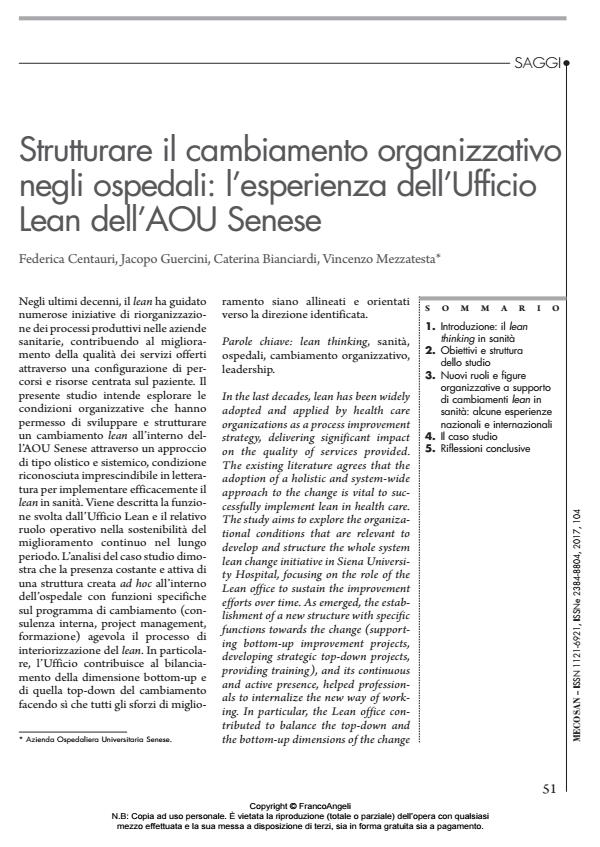Strutturare il cambiamento organizzativo negli ospedali: l’esperienza dell’Ufficio Lean dell’AOU Senese
Journal title MECOSAN
Author/s Federica Centauri, Jacopo Guercini, Caterina Bianciardi, Vincenzo Mezzatesta
Publishing Year 2018 Issue 2017/104
Language Italian Pages 17 P. 51-67 File size 23796 KB
DOI 10.3280/MESA2017-104004
DOI is like a bar code for intellectual property: to have more infomation
click here
Below, you can see the article first page
If you want to buy this article in PDF format, you can do it, following the instructions to buy download credits

FrancoAngeli is member of Publishers International Linking Association, Inc (PILA), a not-for-profit association which run the CrossRef service enabling links to and from online scholarly content.
In the last decades, lean has been widely adopted and applied by health care organizations as a process improvement strategy, delivering significant impact on the quality of services provided. The existing literature agrees that the adoption of a holistic and system-wide approach to the change is vital to successfully implement lean in health care. The study aims to explore the organizational conditions that are relevant to develop and structure the whole system lean change initiative in Siena University Hospital, focusing on the role of the Lean office to sustain the improvement efforts over time. As emerged, the establishment of a new structure with specific functions towards the change (supporting bottom-up improvement projects, developing strategic top-down projects, providing training), and its continuous and active presence, helped professionals to internalize the new way of working. In particular, the Lean office contributed to balance the top-down and the bottom-u program, so that all the improvement efforts were kept towards the same intended direction.
Keywords: Lean thinking, health care, hospital, organizational change, leadership.
Federica Centauri, Jacopo Guercini, Caterina Bianciardi, Vincenzo Mezzatesta, Strutturare il cambiamento organizzativo negli ospedali: l’esperienza dell’Ufficio Lean dell’AOU Senese in "MECOSAN" 104/2017, pp 51-67, DOI: 10.3280/MESA2017-104004